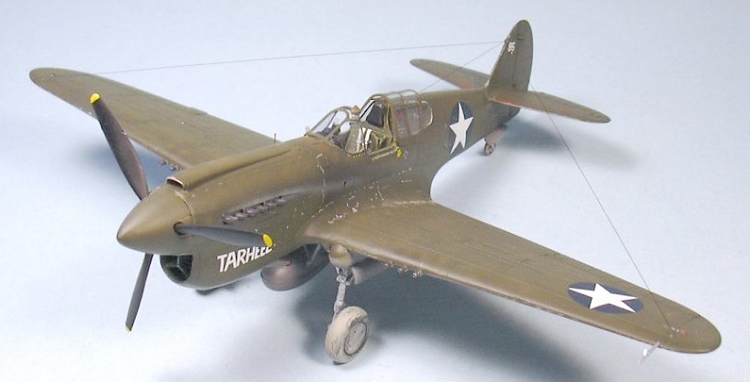
| KIT #: | 09086 |
| PRICE: | $29.95 MSRP |
| DECALS: | Three options |
| REVIEWER: | Tom Cleaver |
| NOTES: |

| HISTORY |
Today’s Air Force has decided to emphasize its history as a means of unit inspiration. This has resulted in units with real “history” as the service decides which unit designations will continue in active service, so that one finds the 1st Fighter Group - which is the lineal descendant of the Lafayette Escadrille. Other units famous in history include the 4th Tactical Fighter Wing - the descendants of the Eagle Squadrons and the 4th Fighter Group; the 23rd Tactical Fighter Wing (Composite), the descendants of the American Volunteer Group; and the 49th Fighter Group, the first organized American fighter group to enter combat in the Second World War. (Yes, The 17th Pursuit Group and 35th Pursuit Group were active in the Philippines, but they were quickly decimated as the Japanese overran the Western Pacific and neither was ever able to really operate as a group.)
The history of the first six months of the 49th Fighter Group in
combat - when they were the first line of defense of Australia against
Japanese invasion - is a record of achievement in the face of overwhelming
odds beyond merely fighting a well-trained, well-equipped, victorious
enemy. It is this record that fully places the 49th Fighter
Group in the same tradition as the 1st, 23rd, and 4th
Groups.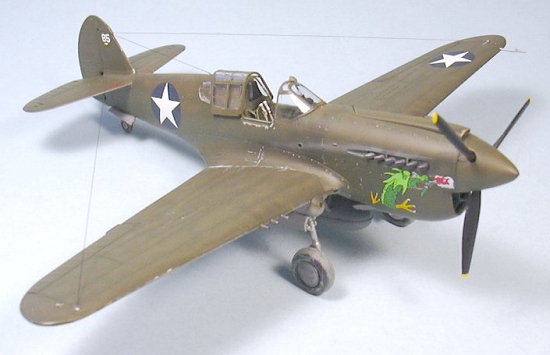
The “49'ers” - as they became known - began life as part of the struggle by the U.S. Army Air Corps to expand itself into the organization everyone knew was going to be needed in the war all saw coming. Major Glen Davasher took command of the newly-organized 49th Pursuit Group on November 20, 1940 at Selfridge Air Base. The 49th was formed from cadre from the 94th Pursuit Group. The three squadrons were the 7th Squadron, who would take the name "Screamin' Demons", the 8th Squadron known as the "Blacksheep," and the 9th Squadron, which adopted the name "Flying Knights."
In May, 1941, the unit transferred to Morrison airfield at West Palm Beach, where the weather was better for the training the pilots needed. Each squadron was equipped with a PT-17 Stearman, a PT-13 Basic Trainer for further instrument work, three P-35 Seversky Advanced Trainer fighter aircraft and one P-40C for training purposes.
Following the attack on Pearl Harbor and the entry of the United States into the Second World War, Major Paul “Squeeze” Wurtsmith took command of the 49th PG on December 12, 1941. The men knew they were going into combat - the only question was when they would leave and where they would go. They read the papers and followed the desperate struggles of the American forces in the Philippines. Rumors spread through the unit as they were notified at the end of the month to begin preparation for overseas deployment that they were going to reinforce the Philippines.
On January 4, 1942, the unit took trains for California, arriving in San Francisco on January 8, where they stayed in the County Livestock Pavilion, affectionately known as the "Cow Palace". While in San Francisco 75 new pilots and 587 more enlisted men joined up to bring the unit to full authorized strength.
Among these 75 youthful officers was a young North Carolinian from
Greensboro, 2nd Lt. George E. Preddy, who had fallen in love
with flying when he took his first flight on his birthday in 1938, and
learned to fly over the following year, getting hold of an old Fleet
biplane, with which he barnstormed around the southeastern United States
when he was off from college. In 1940, when he had two years of college
and qualified for the Navy’s NavCad program, he volunteered three times
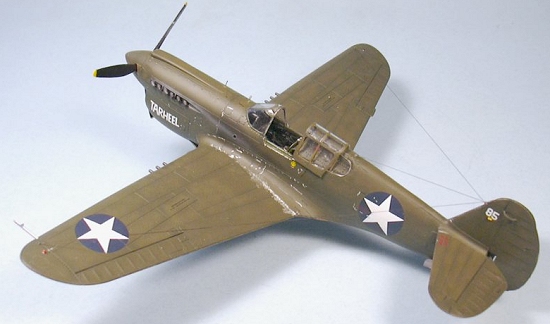 as
the program was expanded, to be turned down each time. That fall he
enlisted in the Army and served in the 252nd Coast Artillery Battalion. In
April 1941, he received orders to report to flight training and graduated
on December 12, 1941, the same day Major Wurtsmith took command of the 49th
Pursuit Group.
as
the program was expanded, to be turned down each time. That fall he
enlisted in the Army and served in the 252nd Coast Artillery Battalion. In
April 1941, he received orders to report to flight training and graduated
on December 12, 1941, the same day Major Wurtsmith took command of the 49th
Pursuit Group.
On January 10, the 49th Pursuit Group received their embarkment orders and two days later they boarded the transports Mariposa and Coolidge, while their heavy equipment was loaded aboard the freighter Luckenbach. The ships cast off and headed out under the Golden Gate Bridge at mid-day. Two hours later, outside the sight of land, they rendezvoused with the light cruiser USS Phoenix, and set course toward the western Pacific.
The rumors had been right that they were headed for the Philippines. However, following MacArthur’s evacuation of Mania and retreat to Bataan, their final destination was changed on January 28 to Melbourne, Australia. On January 31 they sighted the Australian coastline at Cape Howes, and arrived in Melbourne on February 1.
The unit was first based at several sites around Melbourne, where most were bivouacked under tents. Australia was nervous, as was everywhere else in Southeast Asia as the Japanese stormed south, smashing all opposition.
When Major Wurtsmith reported to American headquarters, he found he’d been promoted to Lt. Col., and his squadron commanders had all ben promoted to Captain. The 49th Pursuit Group was the first American unit to arrive in Australia as a complete unit. Over the next three days, after Australian longshoremen refused to unload the ships, the officers and men unloaded all their supplies and equipment by hand. Welcome to the war.
All eyes were now on the Dutch East Indies, the newest front against the
Japanese, with the fall of Singapore. P-40s and B-25s, originally headed
for the Philippines, had been diverted to Brisbane and Townsville. The plan
was that, once assembled, they would be flown to Brisbane on the east
coast, then on to Charleville, then to Cloncurry in Queensland and finally
on to Darwin, from whence they would fly direct to the NEI and on to Java.
The route was known as “the Brereton Route" and was 3,600 miles long. It
was later d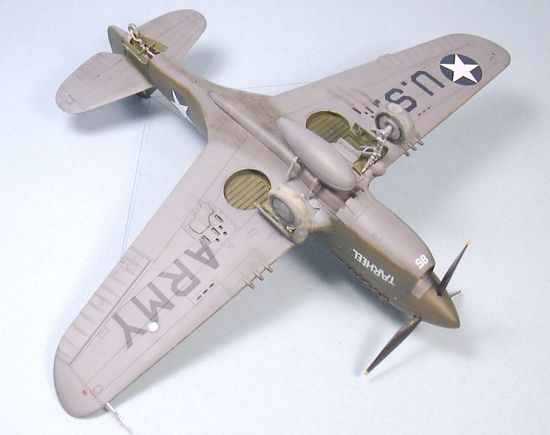 escribed to a pilot of the 49th: "You won't have any
trouble finding your way to Darwin. Just follow the trail of crashed
Kittyhawks, you can't go wrong."
escribed to a pilot of the 49th: "You won't have any
trouble finding your way to Darwin. Just follow the trail of crashed
Kittyhawks, you can't go wrong."
The only USAAC unit to make it from Melbourne to Java via the “Brereton route” were 17 P-40s of the 17th Pursuit Group (Provisional). Formed from evacuated survivors from the debacle of the Philippines, 34 aircraft set out to fly to Java; only 17 made it all the way. In the face of this, the decision was made to ship other P-40Es with their pilots and ground crews aboard the aircraft ferry USS Langley - originally the Navy’s first aircraft carrier. The need was so great that 33 P-40Es newly assigned to the 49th Pursuit Group were flown to Perth for this operation. Once in Perth, they were towed over main roads to Fremantle and loaded on the Langley on February 12. Five days after leaving Australia, the USS Langley was attacked south of Tilatjap, Java, by Japanese aircraft that damaged her so badly she was torpedoed by an escort. 31 pilots and 12 crew chiefs from the 35th Pursuit Group were among the missing, as well as all 33 P-40Es. Java fell by the end of the month. Australia was next in the line of fire.
The Australian Army and Air Force were in combat in North Africa and could not be withdrawn for defense of the homeland. Only a few second-line squadrons and training units existed at this point in Australia. The 49th Fighter Group was all there was to defend a continent.]
The Japanese threat became reality on February 19, a week after the sinking of the Langley. In response, an advance team of the49th was flown to from Williamtown to Darwin in an RAAF flying boat.
An 80 man team to Amberley airfield west of Brisbane to support the aerial reinforcement of northern Australia. Ferry pilots began to deliver Kittyhawks to the three squadrons at Bankstown, Fairbairn and Williamtown. Each received 25 Curtiss P-40E Kittyhawks from the first three production runs, in addition to some P-40E-1CU Kittyhawks from the 4th production run. All these aircraft carried the star-in-circle insignia and "US Army." Within two weeks, 30 P-40Es had been wrecked during training, proving AVG ace Charles Older right in his description of the P-40 as an airplane one did not want to have to land in an emergency, due to its narrow-track landing gear.
After the Darwin raid and the fall of Java, the 49th Pursuit Group acquired
a number of experienced airmen. Captains Nate Blanton and Bill Hennon,
along with Lieutenant Lester Johnsen became new flight leaders in the 7th
Pursuit Squadron, 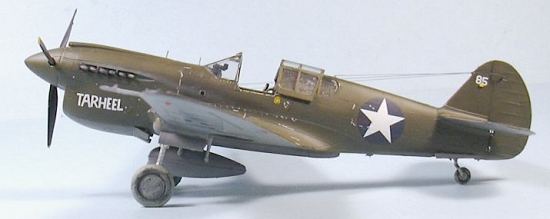 while the 8th Pursuit Squadron was glad to have new
Flight Leaders Captain Allison W. Strauss and George Kiser, while
Lieutenants R.C. Dockstader and Jim Morehead became element leaders. The 9th
Squadron was glad to welcome Captain "Bitchin" Ben Irvin, while
Lieutenants Joe Kruzel and Andy Reynolds became element leaders. George
Preddy was glad to become Kruzel’s wingman in what would eventually become
“The Green Dragon Flight.”
while the 8th Pursuit Squadron was glad to have new
Flight Leaders Captain Allison W. Strauss and George Kiser, while
Lieutenants R.C. Dockstader and Jim Morehead became element leaders. The 9th
Squadron was glad to welcome Captain "Bitchin" Ben Irvin, while
Lieutenants Joe Kruzel and Andy Reynolds became element leaders. George
Preddy was glad to become Kruzel’s wingman in what would eventually become
“The Green Dragon Flight.”
The 49th Pursuit Group began advancing toward their destiny on March 4, 1942, when Group CO Wurtsmith asked 7th PS CO Captain Morrissey how many pilots were combat ready. His answer was that 11 pilots were combat ready. Five days later, Morrissey and his 11 men left Bankstown, headed for Horn Island. Since there was no ground support between Bankstown and Darwin, the line chief - MSGT Hays - issued each pilot a small tool kit with spark plugs and simple instructions, while the armorers also instructed the pilots on how to load the six .50" caliber wing guns.
Using road maps to find their way to Brisbane, the pilots of 7th Squadron then used maritime maps to find their way up the Queensland coast. Three of the P-40Es had to divert to Charters Towers due to mechanical problems. The nine remaining Kittyhawks stayed overnight in Townsville, flying on Iron Range airfield on the 8th, to finally arrive at Horn Island at the tip of Cape York that afternoon. They parked their aircraft at the southern end of the shorter runway and set up their tents in the bush beside the airfield. The next day they began flying patrols within sight of the airfield.
On March 8, Captain James Selman led 25 Kittyhawks of the 9th Pursuit
Squadron from Williamtown to follow “The Brereton Route" to Darwin. Among
the young pilots was George Preddy. They flew to Brisbane, where they left
behind two P-40s with engine trouble, then flew on to Charleville where the
23 remaining Kittyhawks left behind two more aircraft with mechanical
problems. 21 P-40Es pressed on for Cloncurry, led by a B-17. Two more were
lost at Cloncurry to heavy landings, and 19 P-40s flew on to Daly waters on
March 14, where four more aircraft became separated in heavy
thunderstorms. 15 P-40s landed at Daly Waters between passing rain
storms. A three day delay at Daly Waters allowed needed repairs to be made
to the P-40s.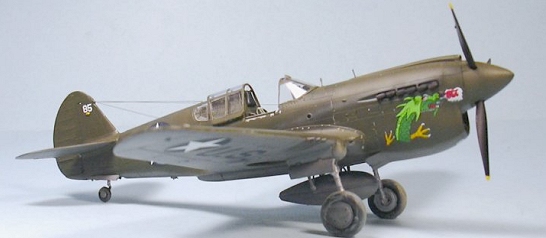
Of the 25 P-40Es that had left Williamtown on March 8, 13 finally arrived at Darwin on March 18. They received orders to start operational patrols immediately. After assessing damage at Darwin airfield caused by the many Japanese bombing raids, the squadron moved to Batchelor airfield, 50 miles south of Darwin. During March more Kittyhawks flew “The Brereton Route" to Darwin; by the end of the month the 9th PS had 21 Kittyhawks and 25 pilots. They were the front line of defense of Australia.
The 49th Pursuit Group entered combat on March 14,1942, when P-40s of the 7th Pursuit Squadron claimed 4 Zeros and 1 Betty in a raid on Horn Island. One P-40 rammed one of the Zeros and made a forced landing at Horn Island with 3 feet of its wingtip missing - proof of the P-40's toughness. During early April, other combat veterans of the fighting in the Philippines joined the 9th Squadron at Darwin.
During their time at Darwin, Lt. Joe Kruzel was promoted to flight commander and took his wingman, Preddy, with him. Carrying a Green Dragon on their right cowls, the flight entered combat on several occasions. Preddy, as a wingman, with a flight commander who enforced aerial discipline, was only able to score two probables in four months.
July 12, 1942, was a slow day at Darwin. When no strikes had materialized by noon, Kruzel decided it was a good day for training. That afternoon, four junior pilots of the 9th Fighter Squadron (their terminology had changed from “Pursuit” to “Fighter” in May1942) took part in a training flight over Manton Reservoir. The pilots were:- 2nd. Lt. John Sauber, 2nd. Lt. George Preddy, Lt. Jack Donalson and 2nd Lt. Deems Taylor. Sauber, wingman of Blue Flight leader, instructed Preddy that he would simulate an attack, in which Preddy would show the appropriate escape maneuver. Sauber dove on Preddy, but misjudged his separation and the two collided. Sauber was most likely killed on impact and his Kittyhawk - #87 - broke up and fell to the ground. Badly injured in the collision, Preddy managed to bail out of “Tarheel,” - #85 - and parachuted to safety while the two P-40s hit west of Manton Reservoir.
After two months in hospital, Preddy was sent back to the United States,
where he ran across another 49th FG veteran, who helped him join
the 487th Fighter Squadron of the newly-minted 352nd
Fighter Group. Sent to England in late 1943, the 352nd traded
in their P-47s for P-51s in April, 1944. 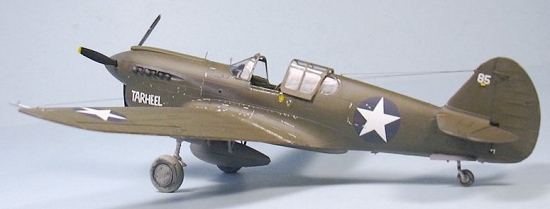 George Preddy proceeded to become
the top-scoring Mustang pilot of history, with 26victories - including 5 in
one day in August, 1944 - before he was shot down and killed by American
flak units while chasing and Fw-190 at low altitude over the Ardennes
forest on Christmas Day, 1944. He had just celebrated his 25th
birthday. His commander, LCOL John C. Meyer, said of him “he was a man with
a core of steel in a largely sentimental soul." Among other virtues, Preddy
showed a typically American attitude toward air-to-air fighting, once
saying, "I'm sure as hell not a killer, but combat flying is like a game,
and a guy like me likes to come out on top."
George Preddy proceeded to become
the top-scoring Mustang pilot of history, with 26victories - including 5 in
one day in August, 1944 - before he was shot down and killed by American
flak units while chasing and Fw-190 at low altitude over the Ardennes
forest on Christmas Day, 1944. He had just celebrated his 25th
birthday. His commander, LCOL John C. Meyer, said of him “he was a man with
a core of steel in a largely sentimental soul." Among other virtues, Preddy
showed a typically American attitude toward air-to-air fighting, once
saying, "I'm sure as hell not a killer, but combat flying is like a game,
and a guy like me likes to come out on top."
The 8th Air Force would benefit tremendously from
the early combat experience of the young pilots of the 49th
Fighter Group. While George Preddy would become the leading Mustang Ace of
the 8th, John D. Landers - who became an ace over New Guinea and
survived being shot down over the Owen Stanley Mountains - became the Group
Commander of the 78th Fighter Group; Sidney Woods - who cracked
up his first P-40 while trying to fly “the Brereton Route” to Darwin in
March 1942 - would revitalize the 4th Fighter Group following
the departure of their legendary commander Don Blakeslee and lead the
former Eagles to become the top-scoring American fighter group of history
in the last six months of the war. Preddy’s flight leader - Joe Kruzel -
returned to the United States and became the Deputy Group Commander of the
361st Fighter Group, then assumed command of the unit following
the death of Group Commander Colonel Thomas Christian, Leading the unit
from August 1944 to the end of the war. Paul Wurtsmith would soon move up
from command of the 49th FG to head 5th Air Force
Fighter Command under Major General George C. Kenney, and would eventually
command the 13th Air Force in 1945.
In the five months the 49th Fighter Group spent on operations in the Northern Territory of Australia, they shot down 64 Japanese aircraft for the loss of 16 of their P-40 Kittyhawks - a 4:1 victory ratio - a score set by young, inexperienced pilots in an outclassed airplane, flying against some of the best enemy pilots of the war. No wonder the 49th is still in existence in today’s air force.
| THE KIT |
For a look at what’s in the box, please visit the preview.
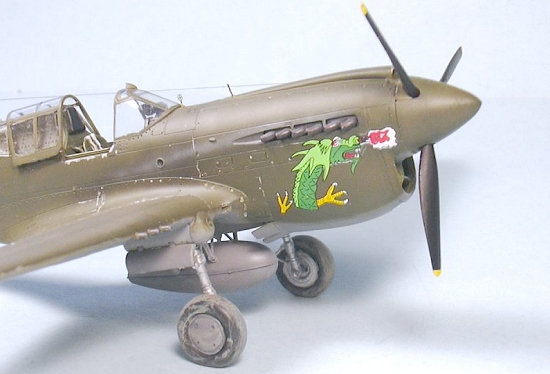 While the P-40E has been a constant presence for modelers in all three of
the major scales, overall accuracy has always been a problem. In 1/48, the
Otaki P-40 has a wing that is unfixably wrong with its swept-back leading
edge, while both the Revell and AMTech P-40E kits have varying accuracy
issues. All of the previously-available kits suffered from cockpits that
needed more detail.
While the P-40E has been a constant presence for modelers in all three of
the major scales, overall accuracy has always been a problem. In 1/48, the
Otaki P-40 has a wing that is unfixably wrong with its swept-back leading
edge, while both the Revell and AMTech P-40E kits have varying accuracy
issues. All of the previously-available kits suffered from cockpits that
needed more detail.
The new Hasegawa P-40E gets all the various bits right - upturned wingtips of the right shape, rear windows of the right shape, spinner of the right shape, landing gear with the proper equipment, etc. The kit-supplied cockpit is head-and-shoulders above any other - though the resin cockpits from True Details and Cutting Edge still provide more delicate detail for those who are picky about this point. The separated canopy is thin enough that it can be successfully posed in the open position, though a vacuformed sliding section would be more accurate.
My only complaint about the model is that the fabric effect on the control surfaces is overdone. This is not a “deal breaker,” and reducing this would be an easy job for anyone with a sanding stick.
| CONSTRUCTION |
Scott Van Aken set out the issues of constructing this model very well in his review .
I found that the major area of difficulty is due to the way in which the kit is broken down so as to facilitate future production of the “big-tail” P-40E-5 and P-40K-1, and the long-tail P-40F/L/M/N that are sure to come, given Hasegawa’s history of choosing aircraft with lots of sub-types and maximizing the tooling over all of them.
 Neither the break between forward fuselage and tail, or the rear cockpit
area, attach on a panel line. I found that the best way to assemble the
fuselage was to attach the four major parts - forward fuselage, cockpit
window area, rear fuselage and rudder - as complete halves. This allowed
me to work on the fit of those joints from both sides, to get things lined
up as closely as possible. Getting rid of the seams for the cockpit window
area and fuselage joints is tricky, and required me to use several coats of
Mr. Surfacer 500, using a sanding stick to get a smooth surface while
taking care not to sand away delicate surface detail. Once you have a seam
like this apparently sanded away, it’s a good idea to paint over the area,
since seams tend to show up under paint, before deciding you’ve completed
the job. As I said, it took me three times to get rid of these seams, and
the centerline seam of the fuselage also required more than one application
of Mr. Surfacer to get rid of that line.
Neither the break between forward fuselage and tail, or the rear cockpit
area, attach on a panel line. I found that the best way to assemble the
fuselage was to attach the four major parts - forward fuselage, cockpit
window area, rear fuselage and rudder - as complete halves. This allowed
me to work on the fit of those joints from both sides, to get things lined
up as closely as possible. Getting rid of the seams for the cockpit window
area and fuselage joints is tricky, and required me to use several coats of
Mr. Surfacer 500, using a sanding stick to get a smooth surface while
taking care not to sand away delicate surface detail. Once you have a seam
like this apparently sanded away, it’s a good idea to paint over the area,
since seams tend to show up under paint, before deciding you’ve completed
the job. As I said, it took me three times to get rid of these seams, and
the centerline seam of the fuselage also required more than one application
of Mr. Surfacer to get rid of that line.
Scott mentioned that it seemed to him that the wing gun plug was different in thickness from the wing. I found that careful fitting of the part to the wings once the rest of the sub-assembly was together resulted in there not being a thickness problem, though the issue of getting rid of the seam was similar to that of the fuselage parts.
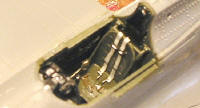 Once these issues were dealt with, the kit assembled very easily.
Once these issues were dealt with, the kit assembled very easily.
I used a Cutting Edge P-40E cockpit I had available, since it is more delicately detailed than the kit-supplied cockpit. Had I not had it immediately at hand, however, the kit cockpit would have been acceptable.
Once the model was together, it was time to go to the paint shop.
| COLORS & MARKINGS |
When one is doing a 49th Fighter Group P-40E, the first question
to get an answer for is - was it a P-40E-1 or a Lend-Lease Kittyhawk Ia?
All of the Kittyhawks with two color upper camouflage are Lend-Lease
airplanes that were taken over by the USAAF and shipped to Australia.
However, the group also received USAAC P-40E-1s from the first three
production batches. These are the airplanes in a single upper color. One
thing has confused researchers, since none of these airplanes has their
USAAC serial number on the vertical fin. This has led some to wonder if
these were not also RAF Kittyhawk Ia’s, that were overpainted in a single
upper color, most likely Dark Earth. In the absence of color photos, an
airplane in overall Dark Earth or overall Olive Drab 41 will look the same
in a black-and-white shot. Given that the historical record shows from
photos that Preddy’s airplane had a single upper color and is listed as
41-5509, which is a serial number in the second production batch of
P-40E-1s for the USAAC, it is most likely that it was in fact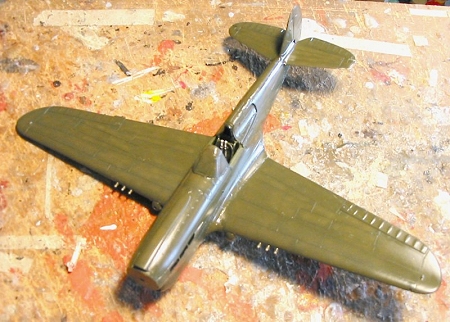 an “American” P-40E.
an “American” P-40E.
After pre-shading the model with flat-black airbrushed on the panel lines, I painted the lower surface with Tamiya “Neutral Grey,” which I lightly faded.
I painted the upper surface of the model with an green-base Olive Drab mixture that closely approximates the Olive Drab 41 I saw on “Glacier Girl” when she visited Chino last fall - this P-38F is the most accurately-restored USAAC early-war airplane, and the color was documented from the original airframe; seeing this airplane confirmed research conducted by Three Guys Replicas about this color. The model was going to be representative of Preddy’s airplane as it was seen when photographed in late June, 1942, after it had been based at Darwin under the tropic sun for four months. Thus, I “faded” the Olive Drab, using increasing amounts of both Gunze-Sangyo “Olive Drab 1" and flat white added to the originally-mixed color. The Gunze color is more yellow and brown, which is what the Olive Drab would look like as it sun-faded.
Once this was done, I gave the model an overall coat of Future.
Decals:
The now out-of-production Aeromaster “Top Guns of the USAAF” sheet has the personal markings for Preddy’s P-40E, including the name and the Green Dragon, and the individual aircraft number, 85. I also used national insignia and the U.S. ARMY markings from the AMTech P-40E decal sheet, and stenciling from a SuperScale P-40 sheet. All of these were printed by MicroScale and presented no problems.
| FINAL CONSTRUCTION |
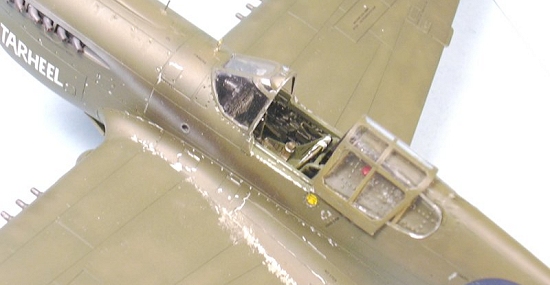 I
washed off the model and gave it another coat of Future, followed by two
coats of thinned Dullcote to give a flat, “sun-baked” finish. Photos of
Preddy’s airplane show it with a minimum of “dinging,” so I limited that to
the fasteners for the cowling and the area along the wingwalk. Exhaust and
gunfire stains were done with Tamiya “Smoke,” with a final application of
thinned light grey for the exhaust, per photos of the original.
I
washed off the model and gave it another coat of Future, followed by two
coats of thinned Dullcote to give a flat, “sun-baked” finish. Photos of
Preddy’s airplane show it with a minimum of “dinging,” so I limited that to
the fasteners for the cowling and the area along the wingwalk. Exhaust and
gunfire stains were done with Tamiya “Smoke,” with a final application of
thinned light grey for the exhaust, per photos of the original.
I then attached the landing gear, exhaust stacks, and prop, unmasked the canopies and attached the rear windows in position with the canopy slid back in the open position, and the 75-gallon drop tank. The extensive antennas were done with nylon repair thread.
| CONCLUSIONS |
Finally, a 1/48 P-40E that is as accurate as anyone could ask for, and presents no difficulties in assembly. Better yet, there is the promise of all the other Kittyhawk/Warhawk sub-types to come, to an equal standard. There will definitely be more of these P-40Es in my collection, particularly as the aftermarket companies bring out more markings possibilities.
March 2005
Review kit courtesy of HobbyLink Japan - www.hlj.com
If you would like your product reviewed fairly and fairly quickly, please contact the editor or see other details in the Note to Contributors.